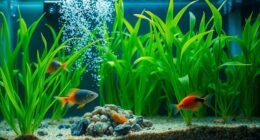In the wild, animals like honeybees, emperor penguins, earthworms, termites, and more showcase incredible dedication and hard work to survive and thrive in their natural habitats. Honeybees have specific roles based on age, with younger bees handling duties inside the hive and older bees foraging for resources. Emperor Penguins display remarkable parenting skills and teamwork in extreme conditions. Earthworms aerate the earth and enrich soil with essential nutrients. Termites build intricate mounds and maintain consistent internal temperatures. Each of these animals plays a crucial role in their ecosystems, contributing to the balance and diversity of wildlife.
Key Takeaways
- Bees carry loads 60% their weight, forage, and have specific roles based on age.
- Termites build intricate mounds, recycle nutrients, and divide labor among different castes.
- Ants demonstrate incredible strength, efficient communication, and adaptability to various environments.
- Emperor penguins exhibit remarkable teamwork, innovative incubation, and strategic feeding in extreme conditions.
- Earthworms aerate soil, enrich it with nutrients, improve water retention, and recycle organic matter into nutrient-rich castings.
Honeybees
Working tirelessly in their highly organized society, honeybees perform a myriad of tasks essential for the survival and productivity of their hive. Each bee has a specific role based on age, with younger bees handling duties inside the hive, such as caring for the queen and larvae, while older bees venture out for nectar and pollen.
By collaborating, honeybees guarantee the smooth functioning of their community. Notably, these tiny creatures can carry loads equivalent to about 60% of their body weight while foraging for resources. This impressive feat showcases their strength and efficiency in gathering materials for honey production and pollination.
The division of labor among honeybees is pivotal for the overall success of the colony, with every individual contributing to the collective goal of sustaining the hive. Through their diligent efforts and coordinated actions, honeybees exemplify the power of teamwork in achieving remarkable outcomes in nature.
Emperor Penguins
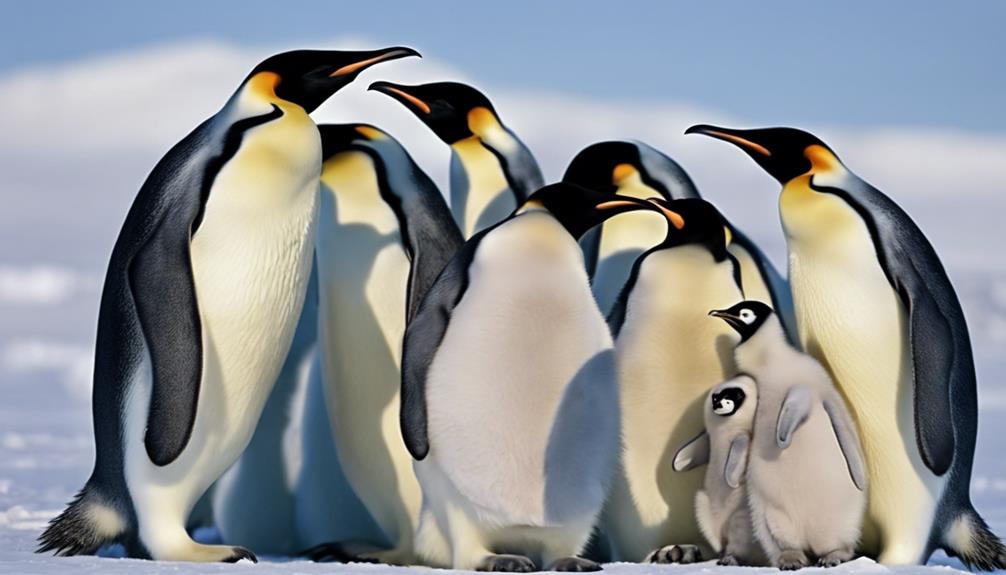
Emperor Penguins are incredible creatures that exhibit efficient parenting skills in the harsh Antarctic environment. These penguins take turns caring for the chick and incubating the egg, showcasing remarkable teamwork in extreme conditions.
The male penguin's dedication is evident as it fasts for about 115 days while diligently looking after the chick, highlighting their exceptional survival strategies.
Efficient Penguin Parenting
During the harsh Antarctic winter, male and female Emperor Penguins exhibit extraordinary dedication in safeguarding their chick. They endure extreme conditions to guarantee their chick's survival, showcasing remarkable teamwork. Here's a closer look at their efficient parenting:
- Innovative Incubation: Both parents take turns incubating the egg in freezing temperatures.
- Strategic Feeding: Male penguins fast for around 115 days while caring for the chick.
- Adaptive Parenting: Emperor Penguins adapt to harsh weather conditions to protect their young.
- Dedicated Duo: Male penguins care for the chick until the female returns with food.
- Survival Tactics: Emperor Penguins show resilience in sustaining themselves and their offspring amid challenges like deep water and medical conditions.
Extreme Antarctic Survival
Enduring harsh conditions and relentless hunger, male Emperor Penguins in Antarctica showcase remarkable dedication in caring for their chicks during the brutal winter months. These incredible animals fast for up to 115 days, traveling long distances of up to 100 miles over treacherous icy terrain to reach open water for food. The temperature in Emperor Penguin colonies can plummet to a bone-chilling -40 degrees Celsius, testing their resilience to the extreme. Despite these challenges, Emperor Penguins exhibit exceptional survival skills, with males taking turns keeping the egg warm on their feet while their partners hunt for sustenance. Their ability to endure such harsh conditions and provide for their young showcases the true spirit of dedication and perseverance in the wild.
| Survival Fact | Description |
|---|---|
| Fasting Period | Up to 115 days without food during harsh winter months |
| Travel Distance for Food | Journey up to 100 miles to reach open water for sustenance |
| Extreme Temperature Range | Enduring temperatures as low as -40 degrees Celsius in their colonies |
Teamwork in Harsh Conditions
Venturing into the icy wilderness of Antarctica, the teamwork displayed by male Emperor Penguins in caring for their chicks under extreme conditions is truly awe-inspiring. These penguins endure harsh Antarctic elements, showcasing remarkable dedication. Here's what makes their teamwork stand out:
- Male penguins brave extreme cold and darkness to care for chicks.
- Both parents take turns protecting and warming the chick.
- The male penguin fasts for months, relying on stored body fat.
- Emperor penguins cooperate diligently in their parenting roles.
- Their teamwork exemplifies resilience and unity in challenging environments.
Earthworms
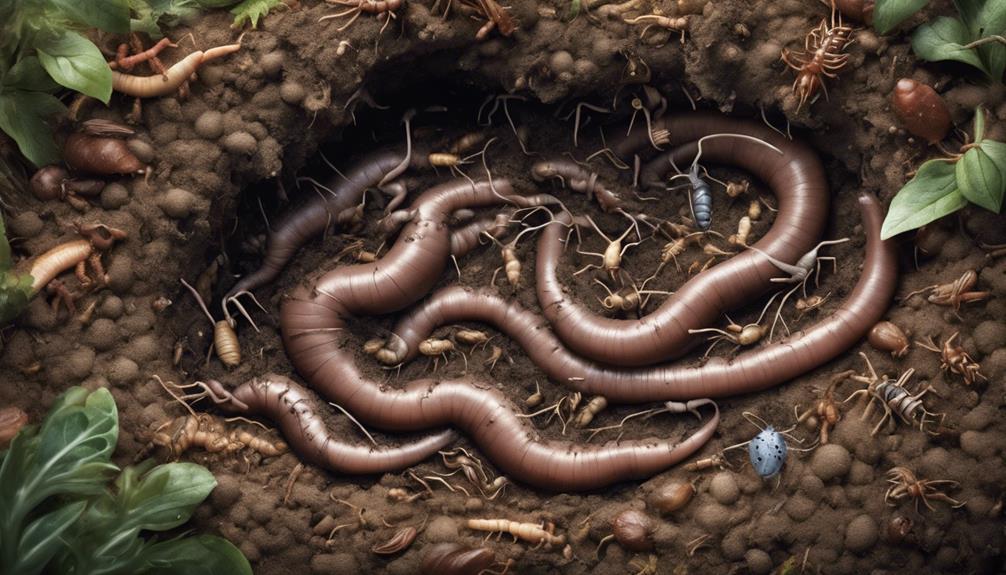
Burrowing tirelessly through the soil, earthworms play an important role in enhancing the ecosystem's vitality by aerating the earth and enriching it with essential nutrients. These remarkable creatures create intricate tunnels as they move, which not only aerates the soil but also improves its water retention capacity. By doing so, earthworms facilitate the penetration of plant roots deeper into the ground, allowing them to access essential nutrients necessary for their growth and development.
Moreover, earthworms are nature's recyclers, consuming organic matter and breaking it down into nutrient-rich castings. These castings are a valuable source of necessary nutrients like nitrogen, phosphorus, and potassium, which are then released back into the soil, enriching it and promoting plant growth. Essentially, earthworms are unsung heroes in the wild, playing an important role in maintaining soil health and fertility within ecosystems.
Termites
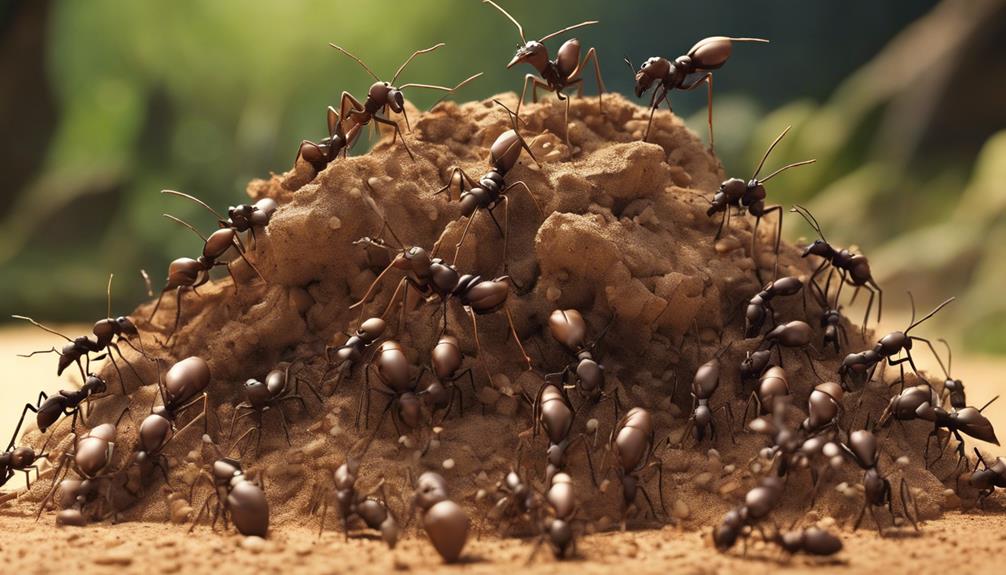
Termites are remarkable insects that work diligently to build intricate mounds and maintain their colonies. These tiny creatures play a vital role in the ecosystem by recycling nutrients and creating fertile soil.
Understanding the structure of termite colonies and their role in the environment can provide valuable insights into the complexity of nature.
Termite Mound Construction
Crafting intricate mounds with a mixture of soil, saliva, and excrement, termites demonstrate remarkable architectural prowess in the wild.
- Termites construct strong, durable mounds several meters high with complex tunnel networks for ventilation.
- The design allows for efficient air circulation, maintaining consistent internal temperatures.
- Termite mounds feature chambers for nurseries, food storage, and waste management, showcasing advanced planning.
- These mounds can last for decades or centuries, serving as long-term homes and enhancing ecosystem diversity.
Termite Colony Structure
Within a termite colony, various castes, each with specific duties, work together to guarantee the colony's survival and success. Workers, the most numerous caste, are responsible for tasks like gathering food, caring for the young, and maintaining nest structures.
Soldiers, equipped with large mandibles, protect the colony from threats. The queen, essential for the colony's growth, focuses on laying eggs continuously.
This structured system ensures that termite colonies operate efficiently, demonstrating a high level of organization. By dividing labor among different castes, termites effectively meet the needs of the colony and maintain sustainability.
This intricate social structure plays a significant role in the success and longevity of termite colonies in the wild.
Termite Role in Ecosystem
Playing an important role in ecosystem health, termites contribute greatly to nutrient cycling and soil regeneration through their specialized activities. Here are some key points about the crucial role of termites in the environment:
- Termites consume old wood and convert it into nutrient-rich soil, aiding in soil health and regeneration.
- Termite colonies have specialized roles, with worker termites collecting food, caring for offspring, and building nests.
- These insects play a crucial role in breaking down cellulose, a tough plant material that many other organisms can't digest.
- The activities of termites help recycle nutrients back into the ecosystem, promoting plant growth and biodiversity.
- By decomposing dead plant material, termites contribute to the overall balance and health of the environment they inhabit.
Cleaner Rossies
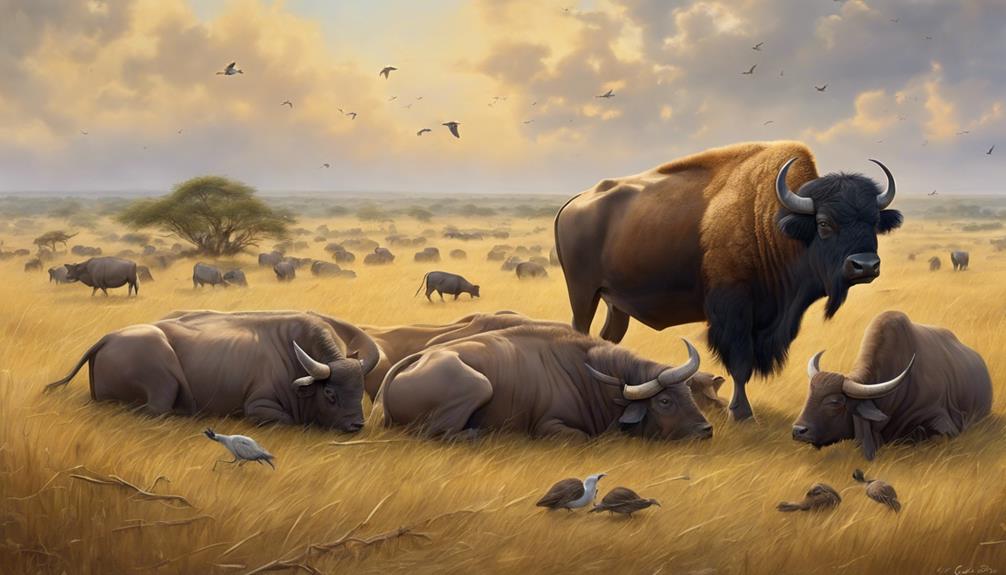
Diligently working day and night, Cleaner Rossies are small fish that play an important role in maintaining the health of coral reefs by removing parasites from other sea creatures. These tiny underwater cleaners tirelessly guarantee the well-being of the marine ecosystem by controlling parasite populations. Their meticulous efforts result in improved overall ecosystem health, showcasing the interconnectedness and symbiotic relationships present in the underwater world.
| Cleaner Rossies | Role |
|---|---|
| Small fish | Eliminate parasites |
| Day and night | Purify reefs |
| Essential for reefs | Sustain balance |
| Enhance ecosystem | Manage parasite populations |
Cleaner Rossies' dedication to their cleaning duties highlights the innovation and efficiency found in nature's design. By actively participating in the health maintenance of coral reefs, these fish demonstrate the importance of every creature's contribution to the ecosystem. Their work serves as a reminder of the intricate web of life beneath the waves, where each organism, no matter how small, plays a critical part in sustaining the beauty and balance of the underwater world.
Koalas

Koalas, the tree-dwelling marsupials famous for their love of eucalyptus leaves, have a unique way of conserving energy. These sleepy yet efficient creatures spend most of their time dozing on branches, sometimes up to 22 hours a day.
Their specialized diet and sedentary lifestyle help them thrive in the wild.
Tree-Dwelling Marsupials
In the wild, the tree-dwelling marsupials known as koalas exhibit a remarkable energy-efficient lifestyle, primarily characterized by their lengthy periods of sleep. Koalas sleep up to 22 hours a day, conserving energy from their low-calorie eucalyptus diet.
These marsupials cling to eucalyptus branches when awake, minimizing movement and maximizing rest. Their energy-efficient approach allows them to thrive with minimal activity, showcasing a unique adaptation for survival.
Despite their extended naps, koalas efficiently manage their energy resources, demonstrating a fine balance between rest and activity in the wild.
Eucalyptus Leaf Eaters
Eating mainly eucalyptus leaves, koalas have evolved a specialized digestion to efficiently extract nutrients from their low-calorie diet. Their digestive system breaks down the tough leaves, allowing them to absorb the limited energy available. This adaptation enables koalas to thrive on a diet that other animals cannot.
By spending most of their time in eucalyptus trees, they conserve energy and stay close to their food source. Koalas have mastered the art of energy efficiency, using their slow metabolic rate and strategic lifestyle.
Their ability to efficiently extract nutrients from eucalyptus leaves showcases the incredible ways animals adapt to their environments.
Sleepy yet Efficient
Amidst their 22-hour slumber, koalas efficiently harness energy from their low-calorie diet by clinging to eucalyptus branches for nourishment. These fascinating marsupials have perfected the art of survival through their unique lifestyle, making them a marvel of nature. Here are some key points to understand the efficiency of koalas:
- Koalas sleep extensively to preserve energy.
- Their diet may be low in calories, but it helps them thrive.
- Clinging to eucalyptus branches allows them to feed efficiently.
- Despite their long naps, koalas manage to gather essential nutrients.
- Energy preservation plays an essential role in the wild for koalas' sustainability.
Sloths

Slowly moving through the treetops, sloths exemplify the art of energy conservation in the animal kingdom. With a remarkably low metabolic rate, sloths can spend 15 to 20 hours per day sleeping. This extended rest period helps them conserve energy, allowing them to thrive on a diet that provides limited energy, such as leaves. Hanging upside down in trees for long periods, sloths have adapted to their environment, where moving slowly isn't a disadvantage but a survival strategy. This slow pace also helps them avoid detection by predators like eagles.
Despite their leisurely lifestyle, sloths are efficient creatures. Their unique adaptations enable them to survive in the wild by conserving energy whenever possible. By understanding the ways in which sloths have evolved to thrive in their habitat, we gain insight into the incredible diversity of strategies that animals employ to succeed in nature.
Pandas

Adapting to a diet with limited energy content, pandas display remarkable dedication by consuming vast quantities of bamboo daily to meet their nutritional requirements. Pandas spend most of their day munching on bamboo, which is low in nutrients but plentiful in their habitat. Here are some fascinating facts about these hardworking bears:
- Pandas have evolved to efficiently extract nutrients from bamboo, making the most of what their diet offers.
- Despite the challenges of a low-energy intake, pandas work diligently to guarantee they meet their dietary needs.
- Survival for pandas hinges on their ability to process and digest bamboo effectively, showcasing their remarkable digestive prowess.
- Their commitment to consuming bamboo showcases their resilience and adaptability to their environment.
- By consuming large amounts of bamboo daily, pandas have developed a unique strategy to thrive in the wild, making them an intriguing species to study.
Tortoises
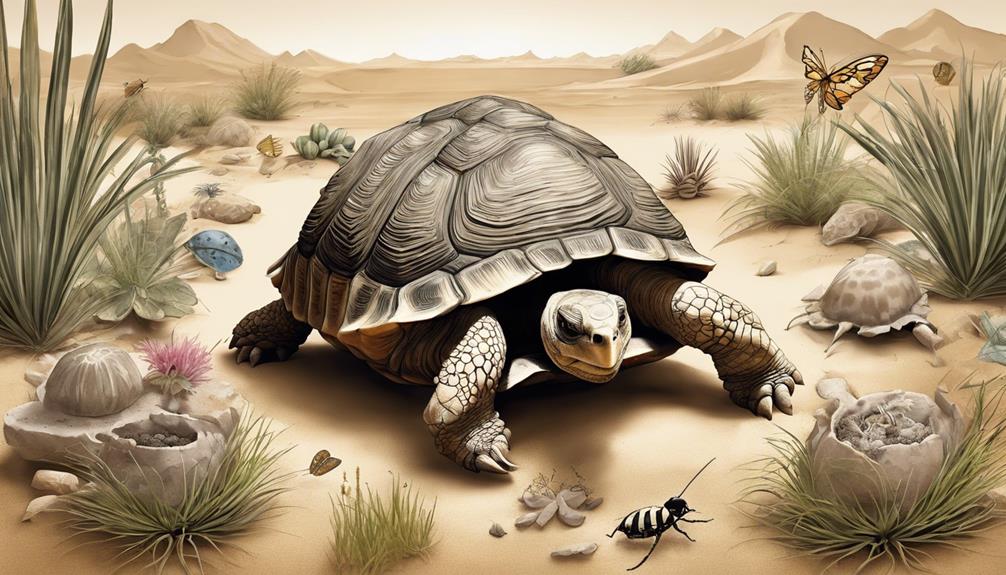
Tortoises, with their heavy protective shells and unique adaptations, play an essential role in their ecosystems. These remarkable creatures move slowly due to their shell's weight, providing them with protection against predators. During harsh conditions, tortoises hibernate for months, conserving energy to survive. Their slow metabolism contributes to their impressive longevity, with some species living for over a century. Tortoises possess a distinctive physiology that enables them to endure extreme temperatures and thrive in diverse habitats.
| Tortoise Facts | |
|---|---|
| 1. Move slowly due to heavy shell | 3. Hibernate for months |
| 2. Long lifespan with slow metabolism | 4. Withstand extreme temperatures |
Despite their leisurely pace, tortoises are vital for their ecosystems. They aid in dispersing seeds and shaping plant communities. By understanding the significance of these unique animals, we can appreciate the intricate balance they bring to the wild.
Ants

Ants demonstrate remarkable strength and efficiency in their collective efforts within highly organized colonies.
- Ants can lift objects 50 times their body weight, showcasing their incredible strength and efficiency in carrying food and building nests.
- Ants work together in highly organized colonies with specialized tasks, such as foraging, caring for young, and defending the nest, to guarantee the survival and success of the group.
- Ants communicate efficiently through the use of pheromones, allowing them to coordinate activities like food gathering, nest construction, and defense effectively.
- Ants play an essential role in ecosystem maintenance by aerating the soil, controlling pests, and recycling organic matter, highlighting their importance in the natural world.
- The industrious nature of ants and their ability to adapt to various environments make them one of the most successful and fascinating insect species in the wild.
These facts about ants reveal their incredible abilities and the pivotal role they play in the ecosystem, showcasing their innovation and adaptability.
Frequently Asked Questions
What Animal Is Hardworking?
I believe the ant exemplifies hard work. Their ability to lift objects 50 times their weight showcases their incredible strength. Their diligence in colony maintenance and foraging demonstrates unparalleled work ethic that inspires admiration.
What Animal Represents Hard Work?
I believe the animal that represents hard work is the honeybee. They tirelessly gather pollen, make honey, regulate hive temperature, and sustain their colony. Their dedication and teamwork exemplify the essence of hard work in nature.
Who Was the Hardest Working Animal on Animal Farm?
I was the hardest working animal on Animal Farm. My motto was 'I will work harder.' Despite my dedication and strength, I was eventually betrayed by the pigs and sent to the glue factory.
Which Animal Is Diligent?
I'm diligent like an ant, endeavoring for success. Hard work propels me forward. I tackle challenges head-on, never backing down. Persistence is my ally, and determination fuels my drive to achieve greatness.
Are the Animals Working Hard in the Wild Rescued and Rehabilitated in Colorado Wildlife Rescue Centers?
Yes, the top wildlife rescue centers in Colorado work diligently to rescue and rehabilitate animals in the wild. These centers provide the necessary care and support to ensure that injured or orphaned animals are given a chance to recover and thrive in their natural habitat.
Conclusion
To sum up, these hardworking animals in the wild demonstrate incredible dedication and teamwork to guarantee their survival and success.
From the diligent honeybees to the determined emperor penguins, each species plays an essential role in maintaining the balance of their ecosystems.
It's truly inspiring to see how these animals work together to overcome challenges and thrive in their natural habitats.
By observing and learning from them, we can appreciate the importance of cooperation and perseverance in achieving our own goals.










